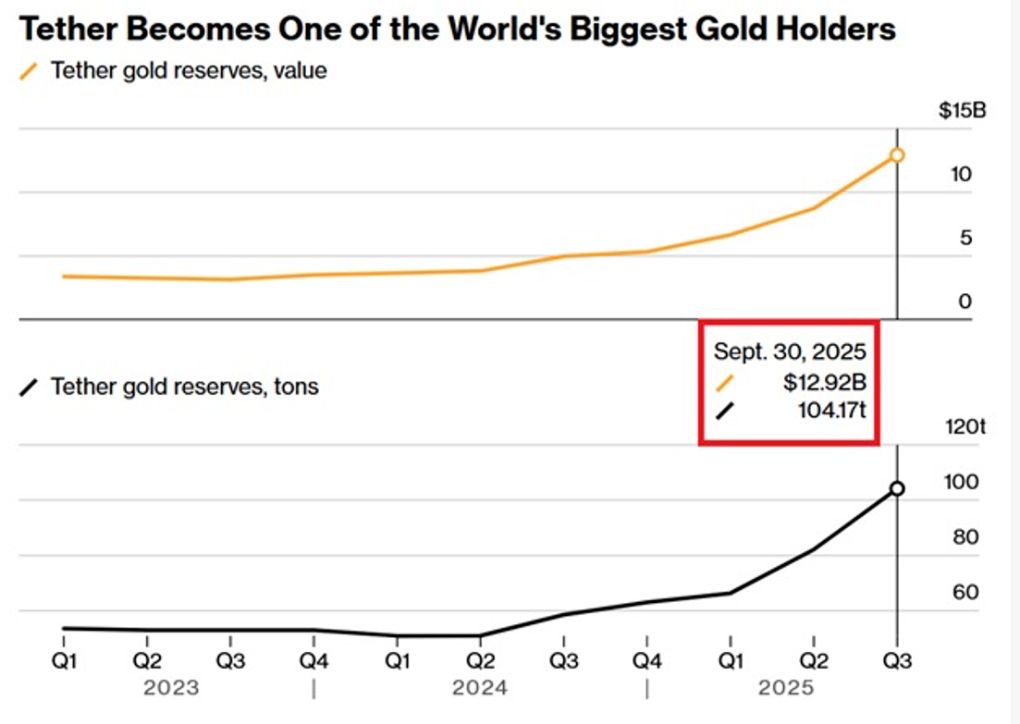Why Cathie Wood’s Latest Bet on BitMine Signals a Strategic Shift to Ethereum-Centric Exposure
- Cathie Wood’s ARK Invest allocated $300M to Ethereum via BitMine, signaling institutional confidence in its treasury and yield potential. - Ethereum’s treasury mechanisms now generate 3–6% staking yields, with 4.1M ETH held by institutions and $67B in USDT/USDC infrastructure. - Regulatory clarity (GENIUS Act, SEC rules) and $23B in ETF inflows since 2024 drive Ethereum’s institutional adoption and price projections to $16,700 by 2026.
Cathie Wood’s ARK Invest has long been a bellwether for institutional bets on disruptive technologies. Its recent $15.6 million purchase of shares in BitMine Immersion Technologies (BMNR), bringing total exposure to over $300 million, underscores a pivotal shift toward Ethereum-centric strategies. This move, executed across three ARK funds, aligns with a broader institutional conviction in Ethereum’s treasury potential—a conviction driven by regulatory clarity, macroeconomic tailwinds, and Ethereum’s evolving role as a foundational infrastructure asset [1][3].
The Ethereum Treasury Flywheel
Ethereum’s treasury mechanisms have transformed since 2023, positioning it as a strategic asset for institutions. By 2025, Ethereum-backed fixed-income instruments had grown into a $17.6 billion asset class, fueled by the U.S. SEC’s reclassification of Ethereum as a utility token and the EU’s MiCA framework [1]. These developments enabled institutions to treat Ether as a liquid, yield-bearing asset, with over 4.1 million ETH now held in institutional treasuries. Staking yields of 3–6% further enhance Ethereum’s appeal, offering a deflationary model that reduces supply while generating passive income [1].
The Ethereum Foundation itself has adopted a yield-driven treasury policy, moving from passive ETH holding to structured deployments in DeFi and operational buffers [3]. This shift mirrors corporate strategies like SharpLink Gaming’s $425 million Ethereum treasury initiative, which acquired 150,000 ETH for staking and yield generation [6]. Such approaches create a flywheel effect: staked ETH reinforces network security, generates income, and enables further capital raising, solidifying Ethereum’s institutional footprint.
Institutional Adoption and Regulatory Tailwinds
Institutional adoption has accelerated as regulatory frameworks mature. The proposed GENIUS Act, which clarifies stablecoin oversight, and the SEC’s 2025 rules-based framework have provided a predictable legal environment for digital asset investment [5]. This clarity has spurred major financial players—BlackRock, Deutsche Bank , Sony—to leverage Ethereum for tokenized funds, Layer 2 solutions, and DeFi applications [2].
Ethereum’s dominance in real-world assets (RWAs) and stablecoin infrastructure further cements its institutional relevance. The network now supports 163 distinct RWA tokens and holds over 50% of the RWA market share. It also underpins $67 billion in USDT and $35 billion in USDC , demonstrating unmatched liquidity and security [2]. Notably, the U.S. government’s strategic staking of 65,232 ETH ($281 million) signals growing confidence in Ethereum as both a store of value and a yield-generating asset [3].
Macroeconomic and Technical Catalysts
Ethereum’s price trajectory is supported by supply-demand imbalances and institutional buying pressure. Exchange balances have hit decade lows, creating a supply squeeze that historically precedes price surges [4]. Meanwhile, Ethereum ETFs have attracted $23 billion in assets since July 2024, amplifying demand [3]. Projections suggest Ethereum could reach $16,700 by 2026, driven by an ascending triangle pattern and ETF inflows [4].
Longer-term forecasts from Changelly align with these trends, predicting Ethereum’s price could rise from $4,693.90 in August 2025 to $8,232.18 in 2026, with continued growth through 2033 [1]. These projections reflect structural shifts, including corporate staking and Ethereum’s integration into traditional finance, signaling a revaluation of its utility and scarcity.
Conclusion
Cathie Wood’s bet on BitMine is not merely a speculative play but a strategic alignment with Ethereum’s institutionalization. By leveraging BitMine’s 1.7 million ETH stake ($7.5 billion), ARK Invest is positioning itself to capitalize on Ethereum’s dual role as a yield-generating asset and a foundational infrastructure layer. As regulatory clarity, macroeconomic dynamics, and technological innovation converge, Ethereum’s treasury potential is reshaping the institutional landscape—making it a cornerstone of long-term capital strategies.
Source:
[1] The Rise of ETH Treasuries: How Ethereum is Reshaping Institutional Fixed-Income Strategies in a Volatile World
[2] Ethereum at a Crossroads | Institutional Outlook
[3] Ethereum's Institutionalization: A Strategic Play for 2025 ...
[4] New Ethereum Price Prediction Targets $17K by 2026. ...
Disclaimer: The content of this article solely reflects the author's opinion and does not represent the platform in any capacity. This article is not intended to serve as a reference for making investment decisions.
You may also like
Coinpedia Digest: This Week’s Crypto News Highlights | 29th November, 2025
QNT Price Breaks Falling Wedge: Can the Bullish Structure Push Toward $150?

Digital dollar hoards gold, Tether's vault is astonishing!

The Crypto Bloodbath Stalls: Is a Bottom In?
